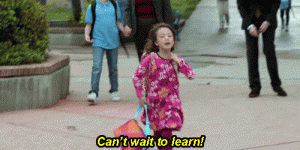By: Kathy Lopez, Bicentennial Intern, Class of 2017, Journalism, Bloomington
This summer I had the privilege of researching and piecing together the history of the Groups Scholars Program, an initiative dedicated to providing financial resources and academic support to first-generation, low-income students at IU.
In a sense, I became part of the Groups Scholars Program before I became part of Indiana University. My journey with Groups began in the summer of 2013, right after I graduated high school. I arrived to campus that year to partake in summer courses, orientation, and join a group of students in adjusting to college curriculum, adapting to being away from home, and discovering the potential in myself as an undergraduate.

I made friends, actually learned how to study, and was proudly one of the few students who knew her way on campus when classes actually started in the fall. I learned a lot about self-discipline and how quickly you have to grow up sometimes. Having been the first one in my family to move away to college, it was a huge adjustment and there was a lot I had to figure out on my own. Groups was a safe place to land even during my first official year as a freshman.
Fast-forward almost four years and I’m sitting in Wells Library, quickly moving towards my last year at IU. Time really does go by fast. I’ve spent the last few years growing and learning more than I anticipated. After my freshman year, I stepped away from the support that Groups provided, because their help during the first year made me feel confident enough to continue on my own. Now, I’ve found myself expanding my relationship with the Groups Program, and Indiana University for that matter, through my recent research.
It’s been interesting to see how the different pieces of history that the other interns and I are researching meet at certain points, or how social movements that were going on nationwide played a crucial role in programs and other initiatives at IU. It’s been a lot of moments of sifting through files, university documents and transcripts, and finding stories you wouldn’t have known about unless you sat in a hot dorm room (converted into a small library) like I did in the middle of summer—true story.
For example, in May of 1969, about 100 African-American students marched into Ballantine Hall where faculty and administration (including the university’s future Vice President and Chancellor, Ken Gros Louis) were meeting to address student concerns regarding the tuition fee increase that was being proposed. From about 11pm to 2:30am, this group of students blocked the doors and windows so that no one could leave and demanded that the Board of Trustees be summoned to discuss these matters. Their concern was that the tuition increase would make it more difficult for African-Americans to attend IU. Police were called and began waiting outside of Ballantine, ready to rush in and intervene.
But a productive conversation began to take place inside. The faculty and administration, although being held hostage, heard these students out and promised to set up a meeting for them with the Board to further discuss these matters. The conversation was productive and non-violent.

The proposed tuition fee increase of 1969 shed light on the financial struggles that college students were facing with tuition affordability, but the Ballantine “Lock-In” focused on how much more consequential the increase would be for African-Americans. Since that time, it has been initiatives like the Groups that have paved the way for low-income students to get a fair shot at higher education. This program was an important example of a great step in the right direction—and it still is. And thanks to a recent increase in funding, students are financially covered for up to four years at Indiana University, as opposed to just their first year, and that is definitely something worth celebrating for #IU2020.